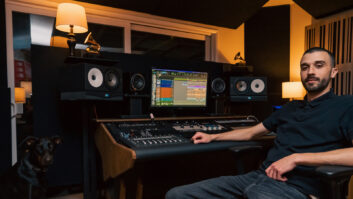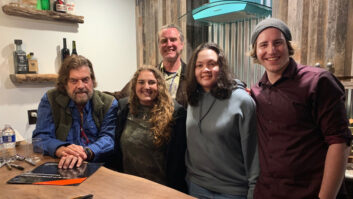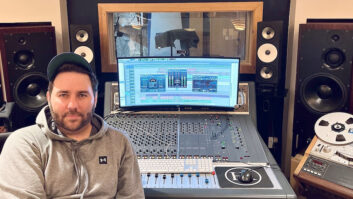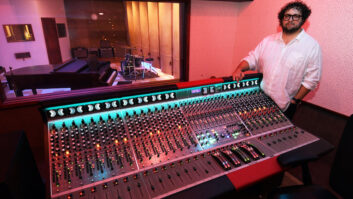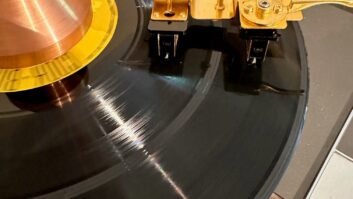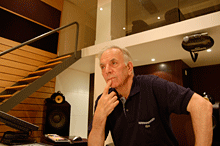
James Lock
Film sound designer João Ganho, the owner of O Ganho do Som Studio in Lisbon, Portugal, reports the passing of James Lock (pictured), the studio’s chief engineer and international business consultant who was formerly the chief engineer at Decca Music Group in the UK. Ganho wrote the following remembrance of Lock:
“Ex-Decca chief engineer James Lock has unexpectedly died last February 11, in his London house. Jimmy Lock— just for his close friends, as he liked to say—started to work at Decca in 1962 and soon became the most prolific in-house sound engineer, following in the steps of his mentor, Kenneth Wilkinson, with whom he did go along recording so many historic performances when both were already considered the two top men inside Decca studios. He joined forces with Sir Georg Solti and Luciano Pavarotti on most of their discs, leaving us a unique legacy of reference recordings till this day. He was, at the same time, the man Herbert Von Karajan would ask for in two trademark opera albums that he did for Decca—La Bohème and Madama Butterfly—in 1972 and 1974 [respectively].
“Winner of two Grammy Awards (one for Mahler’s Ninth Symphony with Solti), James Lock’s recordings always presented us with a lush and very pristine sound—atmospheric but, at the same time, with pinpoint instruments. In this way, he managed to get what every classical music sound engineer may have spent a [lifetime looking] after without getting it: a recording capable of capturing the venue’s acoustics without losing the focus of the orchestra in different sections. With Jimmy’s setup, the music lover was in the maestro’s place without the in-your-face effect one often gets in today’s recordings. Also, in his piano or violin concertos recordings, he was unique: no one could put the soloist in the stereo phantom-center like him. Long before 5.1, his stereo recordings sounded as if there was already one center channel. Neither the violin nor the piano sounded any more panned [to the] extreme left and extreme right, or bigger than the orchestra. They had the right proportions and the right phantom image (Joshua Bell’s Brahms concerto comes to mind).
“Early in 1990, he did probably the first realistic and good-taste 5.1 classical music recording of all history: the Three Tenors concert [at the Baths of Caracalla, in Rome]. Listening to it today, it’s hard to believe that it was Jimmy’s first 5.1 recording and one of the first on the market: He smoothly panned the three tenors’ voices in the three front channels according to their stage positions, using the center channel in the same way as the left and right channels—something the music industry has not learned yet today (listen to the poor front stage’s SACD recordings they are doing today and you’ll understand what I am saying).
“After leaving Decca in 1997, as a consequence of the amazing job he did in Caracalla, James Lock started a career as sound consultant for live amplified classical music performances and helped many outside venues to present symphonic music to the masses. In 2005, he helped the Portuguese Gulbenkian Orchestra with its summer outdoor performances when he got to know, by accident, my Lisbon flagship audiophile and home-theater private room. Here he found the right acoustic and monitoring setup for quality stereo and 5.1 mixes. After stating that he had never heard his recordings sound so amazingly good like in this place, he persuaded me into buying a sound editor and mixing desk so he could come down here and get back on track.
“In June 2007, he joined the studio staff of O Ganho do Som Studio as resident engineer and consultant, helping us in film soundtrack recordings. [He supported] us with his knowledge in the making of O Ganho do Som Film Orchestra, with 80 of the top local musicians. He was also planning a long-dreamt project: mixing two operas from his friend and composer Gian Carlo Menotti, The Media and The Telephone. Last summer, he started to write The Other Side of the Microphone, an autobiography about his Decca years and the human experience of recording great musicians.
“He was the best classical music engineer of all times, but I will remember him as a very educated, nice and warm human being. He liked to look good and had a childish, funny sense of humor. He went off for his last setup but left us a recording legacy that is hard to follow, and professional modesty.
“Recordings will never sound the same.”
—João Ganho
Lock’s move to Portugal was documented in the July 18, 2007 MixLine story “James Lock Moves to Portugal’s O Ganho do Som Studio.” Visit O Ganho do Som Studio atwww.oganhodosom.com.
